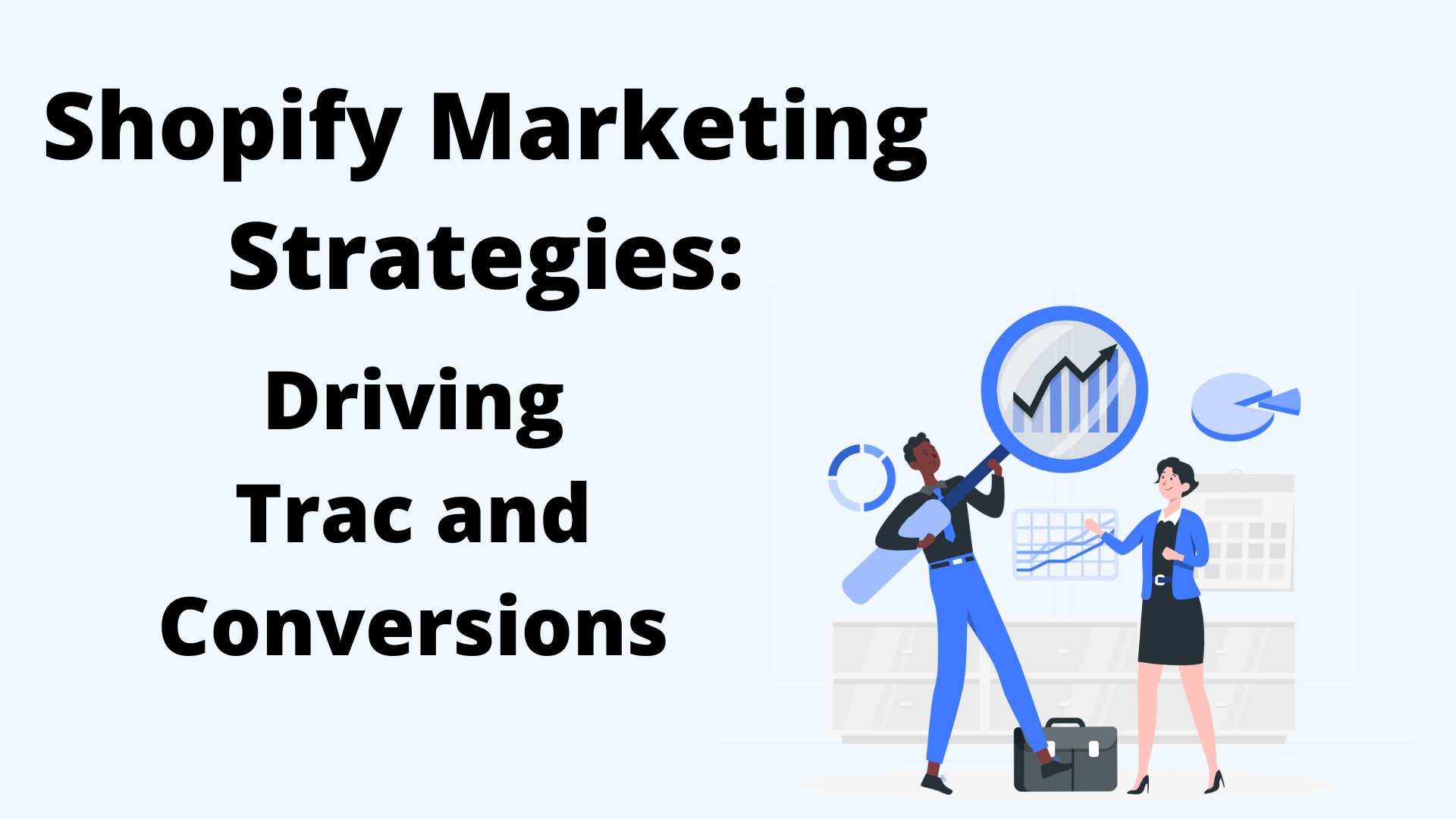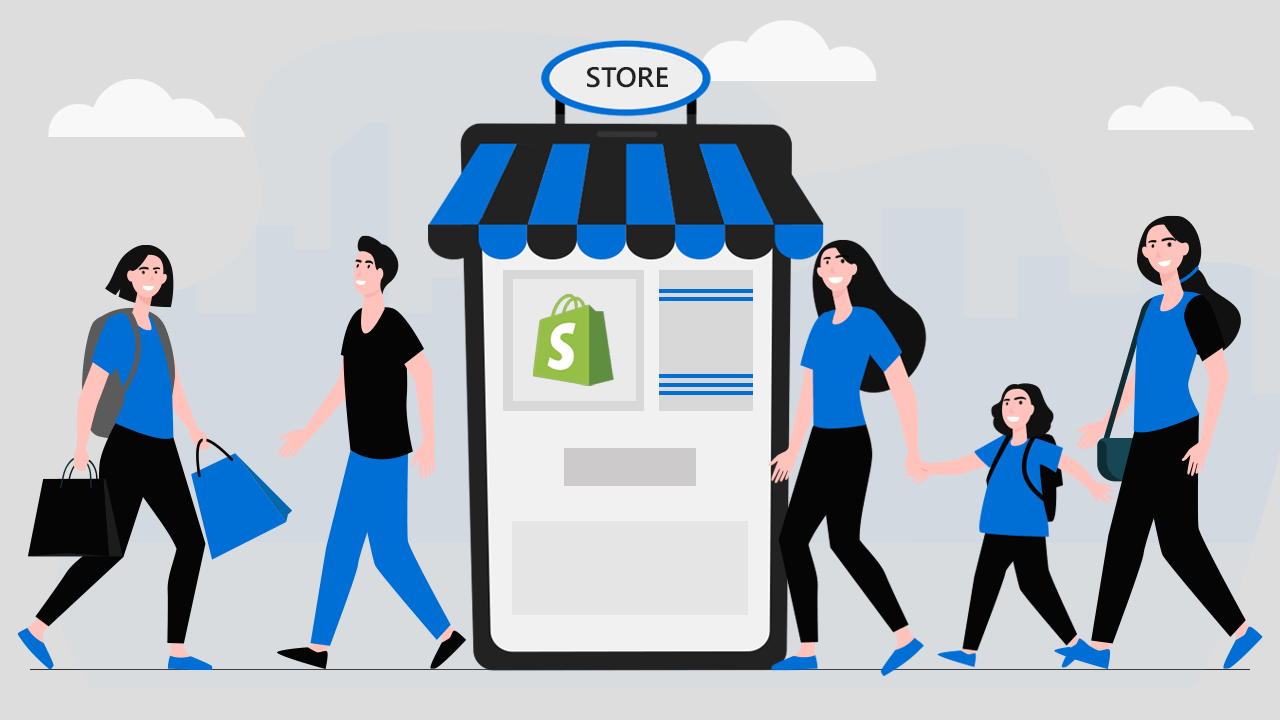
Shopify is a powerful tool for businesses looking to enhance their marketing strategies and drive impressive results. By leveraging Shopify's features, businesses can enjoy a range of benefits that can significantly boost their brand's online presence and overall success.
One of the key advantages of using Shopify for marketing strategies is its ability to increase brand awareness. The platform provides businesses with the tools to create impactful online stores that capture the attention of potential customers. With a visually appealing and user-friendly website, businesses can easily showcase their products and services to a wider audience, driving higher website traffic.
In addition, Shopify's suite of tools enables businesses to improve customer engagement and retention. Features such as email marketing campaigns and social media integrations allow businesses to effectively communicate with their target audience, creating personalized experiences and building stronger relationships. This, in turn, leads to higher customer satisfaction, repeat purchases, and ultimately increased sales and revenue.
Furthermore, Shopify provides businesses with a competitive advantage in the ecommerce landscape. The platform's built-in SEO optimization and social media marketing capabilities enable businesses to improve their visibility on search engines and popular social media platforms. By targeting relevant keywords and creating high-quality content, businesses can attract organic traffic, increase conversions, and improve search engine rankings.
In conclusion, utilizing Shopify for marketing strategies offers numerous benefits including increased brand awareness, higher website traffic, improved customer engagement and retention, boosted sales and revenue, and a competitive advantage in the e-commerce market. With its suite of powerful tools, Shopify empowers businesses to execute effective marketing campaigns and drive significant results.
Search Engine Optimization (SEO)
Search Engine Optimization (SEO) is a powerful tool for driving traffic and conversions on Shopify. By implementing effective SEO strategies, businesses can improve their search engine rankings and attract relevant traffic to their online stores. This involves optimizing website elements such as meta descriptions, product descriptions, and blog posts with relevant keywords. Additionally, businesses can leverage SEO techniques to increase their Import Template visibility on social media platforms and drive referral traffic. By focusing on SEO, businesses can effectively reach their target audience and increase their online visibility, ultimately leading to higher conversion rates and business success.
Keyword Research and Selection
Keyword research and selection is a crucial step in developing effective Shopify marketing strategies. It involves identifying and prioritizing the search terms that your target audience uses when searching for products or services online.
To conduct keyword research, start by defining your target audience and understanding their preferences, needs, and pain points. This will help you discover the keywords that they are likely to use when searching for products similar to yours.
Tools like Google Keyword Planner and SEMrush can be invaluable in this process. Google Keyword Planner allows you to discover relevant keywords by entering seed keywords and analyzing search volume and competition levels. SEMrush provides insights into competitor keywords, search volume, and estimated traffic potential.
Once you have identified relevant keywords, it's important to strategically incorporate them into your website pages. These include page titles, meta descriptions, headings, and image alt tags. This will increase the visibility of your website in search engine results and attract more organic traffic.
When optimizing website pages, focus on using target keywords naturally and avoiding keyword stuffing. Ensure that the keywords chosen not only have high search volume but also align with your brand and offerings.
By conducting thorough keyword research and incorporating target keywords strategically, you can drive relevant traffic to your Shopify store and increase your chances of conversions.
Optimizing Product Descriptions and Blog Posts
Optimizing product descriptions and blog posts plays a crucial role in increasing visibility and driving traffic to your Shopify store. By incorporating relevant keywords and optimizing headlines and meta descriptions, you can improve your search engine rankings and attract more organic traffic.
To optimize product descriptions and blog posts, start by conducting keyword research that aligns with your target audience. Choose keywords that have high search volume and are relevant to your products or content. Incorporate these keywords naturally in your content, avoiding keyword stuffing.
Strategically insert your Shopify products within your descriptions and posts. Highlight the unique features and benefits they offer, providing solutions to specific problems your target audience may have.
Additionally, building high-quality backlinks can enhance your online visibility. Reach out to authoritative websites or influencers in your industry and offer guest posts or collaborations. Encourage satisfied customers to leave reviews, as customer reviews not only build trust but also contribute to higher search engine rankings.
By optimizing your product descriptions and blog posts with relevant keywords and by building high-quality backlinks and encouraging customer reviews, you can improve your search engine rankings and attract valuable organic traffic to your Shopify store.

Building Quality Backlinks
Building quality backlinks is crucial for driving high volumes of traffic to your Shopify store. Backlinks from reputable websites act as signals to search engines, indicating the authority and trustworthiness of your store.
One effective strategy is to create high-quality and valuable content that others in your industry would want to reference and link to. This can include blog posts, informative articles, or helpful guides. By producing content that is relevant and engaging, you increase the likelihood of earning backlinks from other websites.
Another strategy is to explore guest blogging opportunities. Reach out to influential bloggers or industry leaders and offer to write a guest post for their website. This not only allows you to showcase your expertise and gain exposure to a wider audience, but it also gives you the opportunity to include backlinks to your Shopify store within the guest post.
Remember to always prioritize quality over quantity when building backlinks. Seek out reputable websites and sources that are relevant to your industry or products. By focusing on building quality backlinks and increasing your domain authority, you can drive more organic traffic to your Shopify store and ultimately increase conversions.
Google Ads
Google Ads is a powerful tool for driving traffic and conversions to your Shopify store. With Google Ads, you can create targeted campaigns that reach potential customers on search engines and across various websites and social media platforms. By strategically selecting relevant keywords and crafting compelling ad copy, you can increase your visibility and attract organic traffic. Additionally, Google Ads allows you to track and analyze the performance of your campaigns through Google Analytics, enabling you to optimize your marketing efforts and improve your conversion rates. With its wide reach and robust features, Google Ads is an essential component of any effective marketing strategy for Shopify businesses.
Types of Ads Available on Google Ads Platforms
Google Ads platforms offer a variety of ad types to effectively reach potential customers and increase conversions. The three main types include search ads, Google Display Network ads, and YouTube ads.
Search ads appear on Google search engine result pages when users search for relevant keywords. By leveraging relevant keywords and bidding on them, advertisers can target their ideal customers and ensure their ads are visible at the top of search results. Search ads are powerful tools to drive organic traffic and capture the attention of users actively looking for specific products or services.
Google Display Network ads reach a wider audience across a network of websites, videos, and apps. These ads come in various formats, including banner ads, rich media ads, and text ads. Advertisers can choose specific websites or topics to display their ads or use targeting options to reach a specific demographic or interest group. Display Network ads provide an opportunity to create engaging visual content and generate brand awareness.
YouTube ads appear on the popular platform before, during, or after videos. This type of ad allows advertisers to leverage the power of video to tell their brand story, showcase products, or provide valuable content. YouTube ads can be highly targeted based on factors such as demographics, interests, and user behavior, allowing advertisers to reach their ideal audience effectively.
By using a combination of search ads, Google Display Network ads, and YouTube ads, advertisers can maximize their reach and engage potential customers at different stages of the customer journey. Investing in Google Ads platforms ensures businesses can effectively promote their products or services, drive relevant traffic, and ultimately increase conversions.

How to Set Up a Campaign with Google Ads
Setting up a campaign with Google Ads is a relatively straightforward process. Here's a step-by-step guide to get you started:
- Sign up and create an account on Google Ads.
- Choose your campaign type: Search, Display Network, or Video (for YouTube ads).
- Set your campaign goals and objectives. This could be driving website traffic, generating leads, or increasing brand awareness.
- Select your campaign settings, such as your daily budget and target locations.
- Choose your ad formats and create compelling ad copies that are relevant to your target audience.
- Set up your keyword targeting. For search ads, select relevant keywords that potential customers might use when searching for products or services like yours.
- For the Display Network, choose targeting options like specific websites, demographics, or interests to reach your desired audience.
- If you're opting for YouTube ads, create engaging videos that capture the attention of your audience.
- Set your bids and budget. Google Ads operates on an auction-based system, where your bid and keyword relevancy determine your ad placement.
- Review and launch your campaign.
By following these steps, you can effectively set up a campaign with Google Ads and put your ads in front of web browsers through search ads, the Google Display Network, and YouTube ads. These channels provide various ways to reach and engage with your target audience, helping you drive traffic, increase conversions, and achieve your marketing goals.
Creating Effective Ad Copy for Maximum Conversion Rates
Creating effective ad copy is crucial for driving maximum conversion rates. One of the key elements is crafting compelling headlines that grab the attention of potential customers. A strong headline should be concise, highlight the unique selling proposition, and evoke curiosity or emotion.
Persuasive language plays a vital role in influencing the audience. The copy should clearly convey the benefits of the product or service and address the customer's pain points. Using power words and appealing to the emotions of the target audience can significantly enhance the effectiveness of the ad copy.
Clear calls-to-action (CTAs) are essential for driving conversions. They should be direct, specific, and create a sense of urgency. Incorporating action verbs and offering incentives can encourage potential customers to take immediate action.
To tailor the ad copy for maximum resonance, data-driven insights and A/B testing are essential. Analyzing customer demographics, preferences, and behavior can help identify the most effective messaging and language. A/B testing different variations of the ad copy can further refine the content based on how it performs with the target audience.
Incorporating social proof, such as customer reviews and testimonials, can build trust and credibility. Addressing customer pain points directly can resonate with their needs and create a sense of empathy.
In conclusion, creating effective ad copy requires compelling headlines, persuasive language, clear CTAs, and addressing customer pain points. By incorporating data-driven insights and testing, businesses can optimize their ad copy to drive maximum conversion rates.
Social Media Platforms
Social media platforms have become a powerful tool for businesses to drive traffic and conversions. With billions of users active on platforms like Facebook, Instagram, Twitter, and LinkedIn, businesses have the opportunity to reach a wider audience and engage with their target customers in a meaningful way. By utilizing social media marketing strategies effectively, businesses can increase their brand visibility, drive organic traffic to their websites, and boost conversion rates. Furthermore, these platforms provide an ideal space for user-generated content, customer reviews, and word-of-mouth recommendations, all of which can significantly impact a business's reputation and success. To leverage the potential of social media platforms, businesses should focus on creating high-quality content, engaging with their audience through effective social media strategies, and utilizing targeted advertising campaigns to reach their ideal customers. By consistently communicating with their followers, providing valuable content, and maximizing customer engagements, businesses can build a loyal customer base and achieve their marketing goals.
Using Social Media to Increase Organic Traffic and Brand Awareness
Social media platforms have become a powerful tool for businesses to drive organic traffic and increase brand awareness. By using social media effectively, businesses can engage with their target audience and attract potential customers to their Shopify store.
One strategy is to create engaging content that resonates with the audience. This includes using attractive images and compelling copy to capture their attention and encourage them to visit the website. By sharing valuable and relevant content, businesses can establish themselves as a trusted resource and attract a wider audience.
Fostering a sense of community is another effective strategy. Encouraging user engagement through comments and shares can create a loyal customer base and generate user-generated content. This not only increases brand visibility but also builds trust among potential customers.
Integrating social media into the overall marketing strategy is crucial. Businesses should incorporate social media marketing in their efforts by using Facebook ads, influencer marketing, and email campaigns. These strategies help reach the ideal customers and drive traffic to the website.
In conclusion, social media is a valuable asset for increasing organic traffic and brand awareness. By creating engaging content and fostering user engagement, businesses can effectively leverage social media to attract potential customers to their Shopify store.
Reaching a Wider Audience Through Influencer Marketing
In today's highly competitive digital landscape, influencer marketing has emerged as a powerful tool for Shopify businesses to reach a wider audience. By collaborating with influencers, businesses can tap into their creativity, reach, and trusted relationship with their followers to drive traffic and generate referrals.
One of the key benefits of influencer marketing is the ability to reach a larger and more diverse audience. Influencers have built a loyal following that trusts their recommendations and engages with their content. When an influencer promotes a Shopify business, it can attract new potential customers who might not have been aware of the brand otherwise. This leads to a wider reach and increased exposure for the business.
Another advantage of influencer marketing is the opportunity to generate referral traffic. Influencers often share their experiences and recommendations with their audience, which can lead to genuine referrals to the Shopify website. This can result in a higher conversion rate as the referred traffic tends to be more qualified and interested in the products or services being offered.
To maximize the impact of influencer marketing, it is important to find influencers whose niche audience aligns with the brand. By partnering with influencers whose followers represent the target audience, businesses can ensure that their message reaches the right people at the right time. Additionally, leveraging micro-influencers with engaged followings can be highly effective as their followers tend to have a closer connection with them and trust their recommendations.
In conclusion, influencer marketing is a valuable strategy for Shopify businesses looking to reach a wider audience. By collaborating with influencers, businesses can tap into their reach and trust to generate referral traffic and increase brand visibility. Finding influencers whose niche audience aligns with the brand and leveraging micro-influencers can further enhance the effectiveness of this marketing approach.

Crafting Engaging Social Media Posts to Drive Referral Traffic
Crafting engaging social media posts is a powerful strategy to drive referral traffic to your Shopify store. To effectively capture the attention of your target audience, it is essential to create content that stands out and resonates with them.
First and foremost, use attractive images that catch the eye. Visuals play a significant role in social media marketing, as they have the power to captivate users and entice them to learn more. Opt for high-quality, professional images that accurately represent your brand and product offerings.
Equally important is the copy accompanying your posts. Craft compelling captions that pique curiosity, evoke emotions, or offer valuable insights. Use concise and engaging language to communicate your brand message effectively.
Fostering a sense of community is another crucial aspect. Encourage user-generated content by inviting your audience to share their experiences with your products or service. This not only boosts engagement but also builds trust and authenticity for potential customers.
Furthermore, actively engage with your audience through comments, likes, and shares. Responding to comments promptly and addressing customer concerns helps foster a loyal community around your brand.
Lastly, leverage social media as a platform to share updates, promotions, and valuable content. Regularly post relevant and informative content that adds value to your followers' lives. This positions your brand as an authoritative source and keeps your audience engaged.
By following these strategies and consistently delivering engaging content, you can drive referral traffic to your Shopify store and ultimately increase conversions.
Email Marketing Campaigns
Email marketing campaigns are an essential tool for driving customer engagement and loyalty. They allow businesses to directly reach their target audience, providing a personalized and effective way to communicate with potential and existing customers.
To design effective email marketing campaigns, it is crucial to capture emails through lead generation magnets such as sign-up forms, pop-ups, or gated content. These magnets entice visitors to provide their email addresses in exchange for valuable resources or exclusive offers. By collecting email addresses, businesses can establish a communication channel to nurture leads and build relationships with potential customers.
Once email addresses are collected, it is important to create a journey of multiple emails for each signup. These emails can be designed to educate, entertain, and promote the brand or products. By guiding recipients through a series of emails, businesses can gradually build trust and familiarity, ultimately increasing the likelihood of conversion.
To streamline and automate email campaigns, apps like Firepush can be utilized. These tools allow businesses to send high-quality marketing messages at the right time, ensuring that each recipient receives relevant and timely content. Automation ensures that leads are nurtured consistently, even when businesses are not actively managing their campaigns.
In conclusion, email marketing campaigns are a powerful strategy for driving customer engagement and loyalty. By capturing emails with lead generation magnets and designing a journey of multiple emails, businesses can nurture leads and build relationships with their audience. Automating email campaigns using apps like Firepush further enhances the effectiveness of this marketing strategy.
 Shopify is a powerful tool for businesses looking to enhance their marketing strategies and drive impressive results. By leveraging Shopify's features, businesses can enjoy a range of benefits that can significantly boost their brand's online presence and overall success.
One of the key advantages of using Shopify for marketing strategies is its ability to increase brand awareness. The platform provides businesses with the tools to create impactful online stores that capture the attention of potential customers. With a visually appealing and user-friendly website, businesses can easily showcase their products and services to a wider audience, driving higher website traffic.
In addition, Shopify's suite of tools enables businesses to improve customer engagement and retention. Features such as email marketing campaigns and social media integrations allow businesses to effectively communicate with their target audience, creating personalized experiences and building stronger relationships. This, in turn, leads to higher customer satisfaction, repeat purchases, and ultimately increased sales and revenue.
Furthermore, Shopify provides businesses with a competitive advantage in the ecommerce landscape. The platform's built-in SEO optimization and social media marketing capabilities enable businesses to improve their visibility on search engines and popular social media platforms. By targeting relevant keywords and creating high-quality content, businesses can attract organic traffic, increase conversions, and improve search engine rankings.
In conclusion, utilizing Shopify for marketing strategies offers numerous benefits including increased brand awareness, higher website traffic, improved customer engagement and retention, boosted sales and revenue, and a competitive advantage in the e-commerce market. With its suite of powerful tools, Shopify empowers businesses to execute effective marketing campaigns and drive significant results.
Shopify is a powerful tool for businesses looking to enhance their marketing strategies and drive impressive results. By leveraging Shopify's features, businesses can enjoy a range of benefits that can significantly boost their brand's online presence and overall success.
One of the key advantages of using Shopify for marketing strategies is its ability to increase brand awareness. The platform provides businesses with the tools to create impactful online stores that capture the attention of potential customers. With a visually appealing and user-friendly website, businesses can easily showcase their products and services to a wider audience, driving higher website traffic.
In addition, Shopify's suite of tools enables businesses to improve customer engagement and retention. Features such as email marketing campaigns and social media integrations allow businesses to effectively communicate with their target audience, creating personalized experiences and building stronger relationships. This, in turn, leads to higher customer satisfaction, repeat purchases, and ultimately increased sales and revenue.
Furthermore, Shopify provides businesses with a competitive advantage in the ecommerce landscape. The platform's built-in SEO optimization and social media marketing capabilities enable businesses to improve their visibility on search engines and popular social media platforms. By targeting relevant keywords and creating high-quality content, businesses can attract organic traffic, increase conversions, and improve search engine rankings.
In conclusion, utilizing Shopify for marketing strategies offers numerous benefits including increased brand awareness, higher website traffic, improved customer engagement and retention, boosted sales and revenue, and a competitive advantage in the e-commerce market. With its suite of powerful tools, Shopify empowers businesses to execute effective marketing campaigns and drive significant results.









